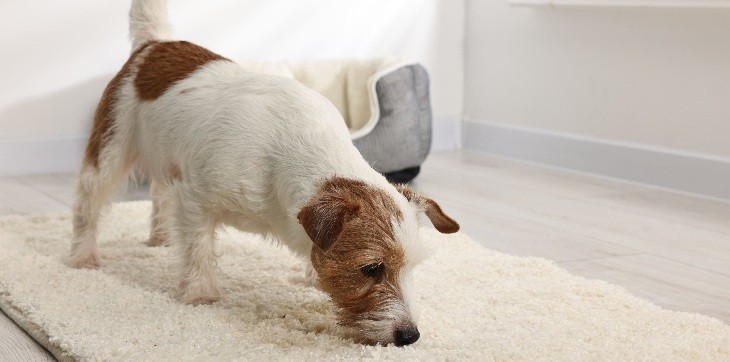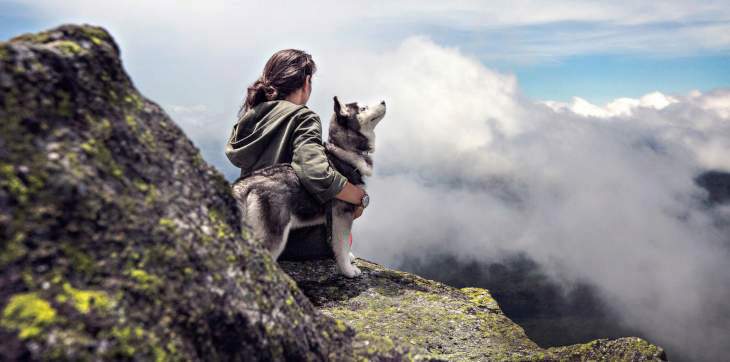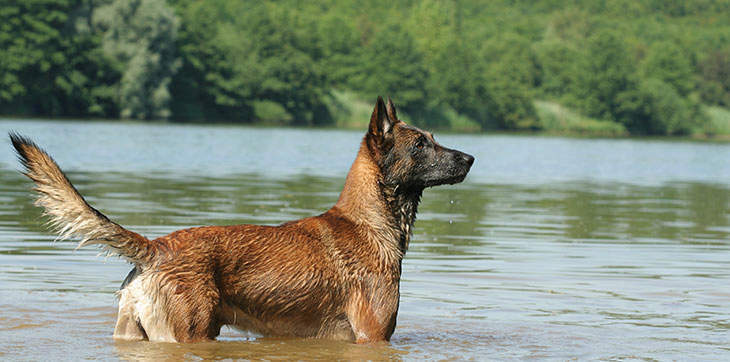Scent Training for Dogs: Steps, Tips, & Benefits
Smell is a powerful sense in dogs, and it shows! For centuries, furry friends have been trained to sniff out prey for hunters, help find missing people, and locate valuable truffles underground. While the most advanced forms of scent training for dogs involve intense professional coaching, any pet parent can teach their Cadet to smell for sport!
Scent work is a fun, challenging activity for canines of all ages and breeds. Find out what exactly nose work for dogs entails and how it benefits their overall health.
Key Takeaways:
- Scent training for dogs is an activity that teaches them to identify and track down a specific scent, usually an essential oil.
- Any dog can master scent training, regardless of their life stage or breed.
- Dog nose work helps reduce stress, provides mental stimulation, promotes physical health, and strengthens the bond between dogs and their pet parents.
What Is Scent Training for Dogs?
Scent training involves hiding an object (usually with a specific odor) and teaching a dog to find it with their sense of smell. Dog scent work offers a fun at-home bonding activity, and there are even scent training competitions where furry friends can put their noses to the test!
Benefits of Scent Training

Nose work is an effective dog sport for physical and mental wellness. These are some of the most prominent perks this activity has to offer:
Reduces stress: Did you know sniffing can help reduce stress and anxiety in dogs? Introducing your Cadet to new smells will pique their interest and provide a naturally satisfying activity.
Provides mental stimulation: Brain games like scent training promote your dog’s cognitive development. Mentally stimulated furry friends are less likely to experience dog boredom and engage in destructive behaviors.
Promotes physical fitness: While not as intense as running, swimming, or hiking with dogs, nose work can be a nice workout. It’s an especially good choice for dogs who have mobility issues and need less-intense exercise.
Strengthens your bond: Dog training is a great way to build trust and cooperation. Plus, your furry friend will be happy to spend some quality time with you!
🐕 Related → How to Exercise with Your Dog: 5 Ways to Play
How to Scent Train Your Dog
Although any Cadet can learn dog nose work, you’ll need to follow a specific process to get started. You’ll need:
- Cotton swabs
- Disposable gloves
- Essential oil intended for nose work (such as birch, anise, or clove)
- Glass jar
- Plastic container with a lid
- Small tin box
- Treats
- Tweezers
Step #2: Bring the Scent to Your Dog
Step #3: Introduce the Plastic Container
Step #1: Get the Scent Ready
While your dog is in another room, put on a pair of disposable gloves and gently add a few drops of essential oil to your cotton swabs (you’ll need several). Make sure you use an oil that’s specifically intended for dog training, like birch or anise. To reduce waste, you can cut the swabs in half for double the amount. Then, put one scented swab in a glass jar with a tight-fitting lid. Remove your gloves and put them in the garbage right away to avoid “contaminating” other objects with the essential oil scent.
Once that’s done, grab a small tin box and drill a few small holes in the lid. Use tweezers to take one swab from the glass jar and put it in the box. Make sure you don’t grab the scented part of the swab with your tweezers!
Find a small plastic container and drill some holes in the lid, then put it aside. This will house the scented box when you’re ready to begin training.
Step #2: Bring the Scent to Your Dog
When you have the scented tin box ready, walk over to your dog. Hold a dog treat in your other hand, allowing them to sniff. Once your dog stops sniffing the treat and turns their attention to the box, move the treat to the hand that’s holding the box and then give your dog the treat. (This will help them associate the reward with the box.) Repeat this process a few times, changing which hands are holding the box and treat.
Step #3: Introduce the Plastic Container
Get your plastic container, put the tin box inside, and close the lid. Repeat the process from Step #2, holding the container and treat in separate hands and rewarding your dog. Once they get the hang of it, move the container to the floor and repeat the process.
Step #4: Hide the Scent
After your dog has mastered these steps, you’re ready to hide the plastic container. Remove them from the room and place the container somewhere that will be easy for them to find. Let your dog start searching for the scent, then reward them once they discover it! As your dog improves their nose work skills, make the container more difficult to spot with each repetition.
Scent Training Tips

Practice makes perfect! Follow these guidelines to ensure quality scent work for dogs:
- Keep sessions short: Start with quick training sessions (no longer than 15 minutes) to keep your dog’s interest and prevent them from feeling overwhelmed. Repeat frequently throughout the day for the best results.
- Choose an enticing reward: The easiest way to teach your dog is to motivate them with something they love! High-value rewards, such as savory jerky treats or exciting combination dog treats, are your best bet.
- Look for signs your dog is on the scent: Intense sniffing, perked ears, and an upright tail are all signs your Cadet is focused on the scent. Encourage them as they get closer to finding it.
- Increase the challenge: Once your dog understands their task, consider hiding the scent in spots that are harder to find—such as on a shelf or in another room. You can also introduce new scents or take the challenge outside for a fresh spin on the game!
Ready, Set, Sniff!
Trying nose work for dogs at home is a constructive way to put their best sense to the test. Remember to be patient as your Cadet learns to follow the scent and give them praise every step of the way. Soon enough, they’ll be sniffing out scents like a pro!
Did you know dogs with especially keen senses can be trained to help individuals needing assistance? Discover these less common, impressive service dog breeds.






